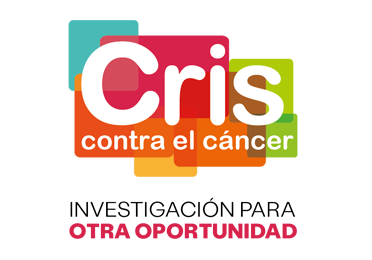
- For the first time in the context of brain metastasis, VHIO-led research has evidenced the striking preclinical efficacy of a BRAF inhibitor, C1a, that can cross the blood-brain barrier.
- Published in Cancer Research, findings reveal the potent and prolonged antitumor activity of C1a in patient-derived preclinical models of mutant-BRAF-driven melanoma brain metastases, even upon relapse on approved BRAF and BRAF/MEK inhibitors.
- Results support the clinical development of this novel compound and a clinical trial is now open to test its efficacy in melanoma brain metastasis.
- Aimed at combating potential, future disease progression upon treatment with C1a, the investigators have also unveiled mechanisms of resistance and discovered that combinatory treatment with immunotherapy prevents resistance and tumor relapse.
According to recent statistics (1) , malignant melanoma is the leading cause of death from skin cancer with over fifty-seven thousand fatal cases estimated in 2020 worldwide. With the incidence of melanoma on the rise, the need to develop more effective, targeted treatments to improve outcomes for these patients is of the utmost importance.
Patients suffering from this tumor type can present with brain metastases which is a notoriously difficult to treat and devastating disease. Specifically, brain metastasis is detected in between 7-20% of these patients at diagnosis, and in up to around 70% at later stages of disease, with frequent relapse occurring primarily at the brain metastatic site.
While the current suite of approved therapies for this patient population including immune checkpoint inhibitors (ICIs), and combinations of BRAF and MEK inhibitors (BRAFi/MEKi), such as dabrafenib and encorafenib, and binimetinib and trametinib, respectively, have vastly improved the survival of patients with BRAF V600E/K-mutated melanoma, not all patients respond to ICIs, and acquisition of resistance to approved BRAFi/MEKi inevitably and ultimately occurs. Importantly, brain metastatic lesions respond less well to treatment compared to extracranial lesions. This is partly due to the fact that pharmacological compounds do not reach the brain since they do not cross the blood-brain barrier.
Published in Cancer Research (2), a journal of the American Association for Cancer Research (AACR), research led by Joan Seoane, Co-Director of Preclinical and Translational Research at the Vall d’Hebron Institute of Oncology (VHIO), sought to respond to this unmet clinical need. The investigators aimed to characterize the efficacy of a potent brain-penetrant BRAF inhibitor, C1a, that can cross the blood-brain barrier. They assessed this novel agent as therapy following disease progression on treatment with BRAFi and BRAFi/MEKi combinations.
The brain-penetrant BRAFi C1a was developed to have optimized brain permeability, avoid the paradoxical activation (paradox breaker) of the MAPK signaling pathway, and selectively target BRAF V600E/K tumors. Considering these properties, the researchers proposed that C1a could therefore promise an effective treatment avenue for patients with brain metastatic BRAF V600E/K-mutated melanoma.
Putting C1a through its paces against brain metastasis
Directed by Joan Seoane, the study investigators assessed the efficacy of C1a in vitro and in vivo in melanoma cell lines and patient-derived models of BRAF V600E-mutant brain metastases following relapse after treatment with BRAFi and MEKi therapies.
Compared to approved BRAFi, C1a triggered robust responses in BRAF V600E patient-derived models . These findings support its powerful permeability, activity, and potency as a paradox breaker. The investigators next assessed the activity of dabrafenib and C1a. By performing a head-to-head comparison of dabrafenib with C1a, results show that C1a outperformed dabrafenib that was administered at a 10 times higher dose. Moreover, data show that C1a can increase survival by more than 3-fold compared with those treated with or relapsing on combinations of BRAF and MEK inhibitors. In addition, treatment at a maximized dose of C1a led to disease remission in tumors progressing upon treatment of these approved inhibitors.
“Importantly, our investigations showed striking activity in brain metastatic models analogous to that achieved in extra-cranial models,” said Joan Seoane, corresponding author of this study alongside Piergiorgio Pettazzoni, Roche Pharma Research & Early Development pRED, Roche Innovation Center Basel (Switzerland).
“At the optimal dose, C1a achieved effective and increased exposure in the brain compartment, and superior results compared to other BRAF inhibitors, even at doses mimicking the clinically approved regimen for these BRAF and MEK inhibitors. Our findings point to potentially positive outcomes of the clinical trial testing the C1a compound that is currently underway” added Joan Seoane, an ICREA Research Professor and Principal Investigator of VHIO’s Gene Expression and Cancer Group.

Seeking out mechanisms of cancer drug resistance
The brutal reality of cancer is that acquired resistance to targeted therapies eventually occurs. In response to this anticipated phenomenon, the investigators also studied mechanisms of resistance to help prevent tumor escape from C1a, and sought to identify a potential combinatorial treatment strategy to further prolong antitumor responses.
The ex vivo analysis of tumors manifesting relapse on C1a demonstrated that MAPK-reactivation occurs as the main resistance mechanism in both peripheral and brain metastatic setting, with BRAF kinase domain duplication as the dominant driver of resistance.
“These insights will help to identify robust biomarkers of response and ultimately guide patient stratification in clinical trials,” said Ester Bonfill-Teixidor, co-first author of this study and a Post-Doctoral Fellow of Joan Seoane’s Gene Expression and Cancer Group at VHIO.
C1a: Stepping up in combination
Transcriptomic analysis of the resistant tumors showed an inflammatory phenotype indicating a clear implication of the immune system. Considering that immune-checkpoint inhibitors (ICI) are already in clinical use to treat melanoma, the investigators explored a combinatorial approach with C1a and anti-PD1 antibody.
Results showed that C1a also promotes potent anti-tumor responses when combined with anti-PD1 and dramatically reduces the onset of relapse when compared to C1a monotherapy. Moving forward, the therapeutic pairing of C1a with immune checkpoint blockade could therefore provide new hope for this patient population.
“Considering the lethality of brain metastasis from melanoma, identifying and developing alternative and more effective treatment strategies is crucial. Our results support the clinical testing of this novel agent within the context of existing therapies, and a clinical trial testing this compound is now recruiting patients. A positive result of the trial will provide melanoma brain metastasis patients with new hope,” concluded Joan Seoane.
This research was carried out in collaboration with other researchers at the Vall d’Hebron Barcelona Hospital Campus, Roche (Switzerland), Institute for Research in Biomedicine (Bellinzona, Switzerland), and the August Pi i Sunyer Biomedical Research Institute – IDIBAPS (Barcelona, Spain).
This project was mainly funded by grants received from the Fundación Asociación Española contra el Cáncer (Spanish Association against Cancer – AECC), Fundación BBVA (BBVA Foundation – VHIO institutional Comprehensive Program of Cancer Immunotherapy & Immunology – CAIMI), Fundación FERO (FERO Foundation), Ramón Areces Foundation, and the Instituto de Salud Carlos III Fondo de Investigación en Salud program (Institute of Health Carlos III – ISCIII, FIS funding program).
References:
- Sung H, Ferlay J, Siegel RL, Laversanne M, Soerjomataram I, Jemal A, Bray F. Global Cancer Statistics 2020: GLOBOCAN Estimates of Incidence and Mortality Worldwide for 36 Cancers in 185 Countries. CA Cancer J Clin. 2021 May;71(3):209-249.
- Bonfill-Teixidor E, Iurlaro R, Handl C, Wichmann J, Arias A, Cuartas I, Emmenegger J, Romagnani A, Mangano L, Lorber T, Berrera M, Godfried Sie C, Köchl F, Eckmann J, Feddersen R, Kornacker M, Schnetzler G, Cicuéndez M, Cordero E, Topczewski TE, Ferrés-Pijoan A, Gonzalez J, Martínez-Ricarte F, Muñoz-Couselo E, Tabernero J, Bischoff JR, Pettazzoni P, Seoane J. Activity and resistance of a brain-permeable paradox breaker BRAF inhibitor in melanoma brain metastasis. Cancer Res. 2022 May 18:canres.4152.2021. doi: 10.1158/0008-5472.CAN-21-4152. Epub ahead of print.








